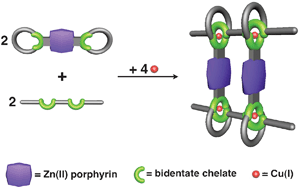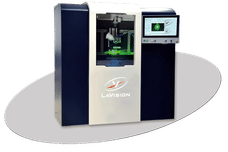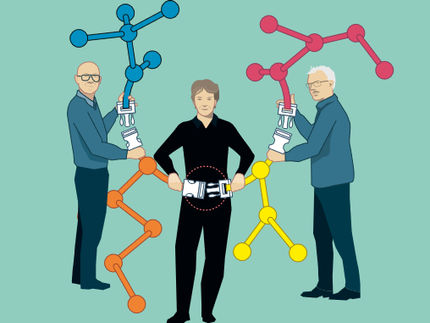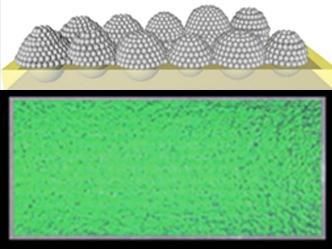Copper(I) interlocks rings and rods
Scientists in France have synthesised highly functional [4]pseudorotaxanes utilising the gathering and threading effect of copper(I). Jean-Pierre Sauvage, Jean-Paul Collin, Valérie Heitz and colleagues from the University of Strasbourg, in France, have prepared a highly functional interlocking system consisting of four independent organic fragments (two bis-macrcycles and two rod-like compounds which are threaded through the rings) and four copper(I) metal centres. This self-assembly process relies on the formation of coordination chemistry bonds between the copper centres and nitrogen that form easily and quantitatively. Of particular significance is the high functionality of the system which is due to two zinc complexed porphyrins incorporated as lateral plates, and the rods and rings containing chelating groups. Originally the motivation to produce assemblies of interlocking rings (catenanes) or rings threaded by string-like fragments (rotaxanes) was the synthetic challenge. However these structures possess new properties that are useful in the fields of photochemistry, photochemical sensors, electron transfer, host-guest chemistry and molecular machines. ‘The construction principle in these systems, based on coordination chemistry can be generalised to form more complex edifices towards the fabrication of molecular devices,’ says Sauvage. Original article: Sauvage et. al.; "Quantitative formation of [4]pseudorotaxanes from two rods and two bis-macrocycles incorporating porphyrinic plates between the rings"; Chem. Commun. 2009

Other news from the department science
These products might interest you

SprayMaster inspex by LaVision
Quality Control for Your Spraying Process Through Digital Spray and Particle Analysis
Reliable, Automated, Digital - The Geometry Measurement of Your Spraying Process in Real Time

FireSting-PRO by PyroScience
New fiber optic measuring device: Precise measurements even in the smallest volumes
Measure pH, oxygen and temperature even under sterile conditions

VEGAPULS | VEGABAR | VEGASWING by VEGA Grieshaber
Cyber-safe level measurement - here's how it works
Find out more about the unique sensor for liquid and solid media

Get the chemical industry in your inbox
By submitting this form you agree that LUMITOS AG will send you the newsletter(s) selected above by email. Your data will not be passed on to third parties. Your data will be stored and processed in accordance with our data protection regulations. LUMITOS may contact you by email for the purpose of advertising or market and opinion surveys. You can revoke your consent at any time without giving reasons to LUMITOS AG, Ernst-Augustin-Str. 2, 12489 Berlin, Germany or by e-mail at revoke@lumitos.com with effect for the future. In addition, each email contains a link to unsubscribe from the corresponding newsletter.
Most read news
More news from our other portals
See the theme worlds for related content
Topic world Sensor technology
Sensor technology has revolutionized the chemical industry by providing accurate, timely and reliable data across a wide range of processes. From monitoring critical parameters in production lines to early detection of potential malfunctions or hazards, sensors are the silent sentinels that ensure quality, efficiency and safety.

Topic world Sensor technology
Sensor technology has revolutionized the chemical industry by providing accurate, timely and reliable data across a wide range of processes. From monitoring critical parameters in production lines to early detection of potential malfunctions or hazards, sensors are the silent sentinels that ensure quality, efficiency and safety.




























































